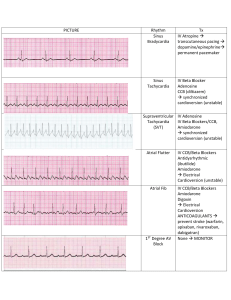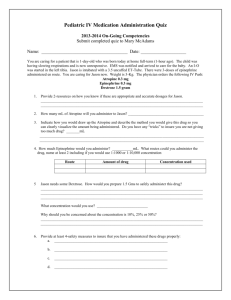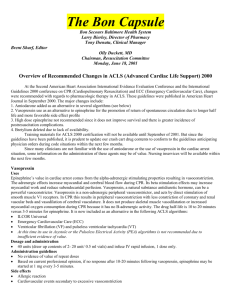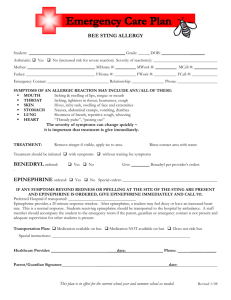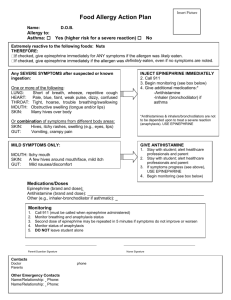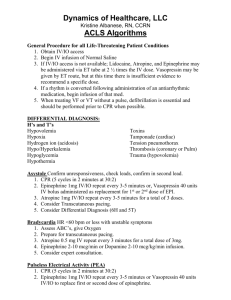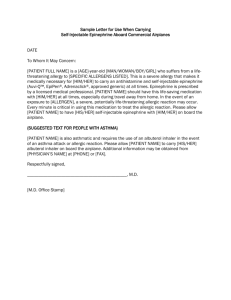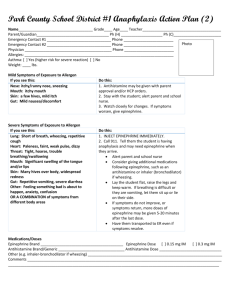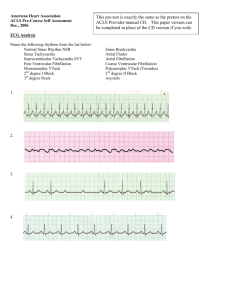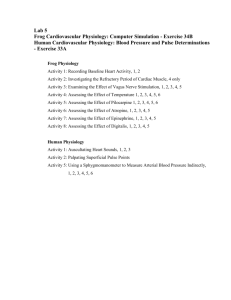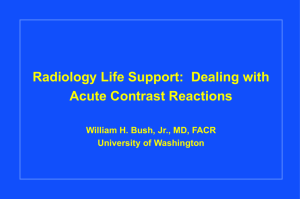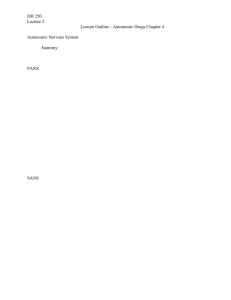ACLS Megacode Simulator
advertisement
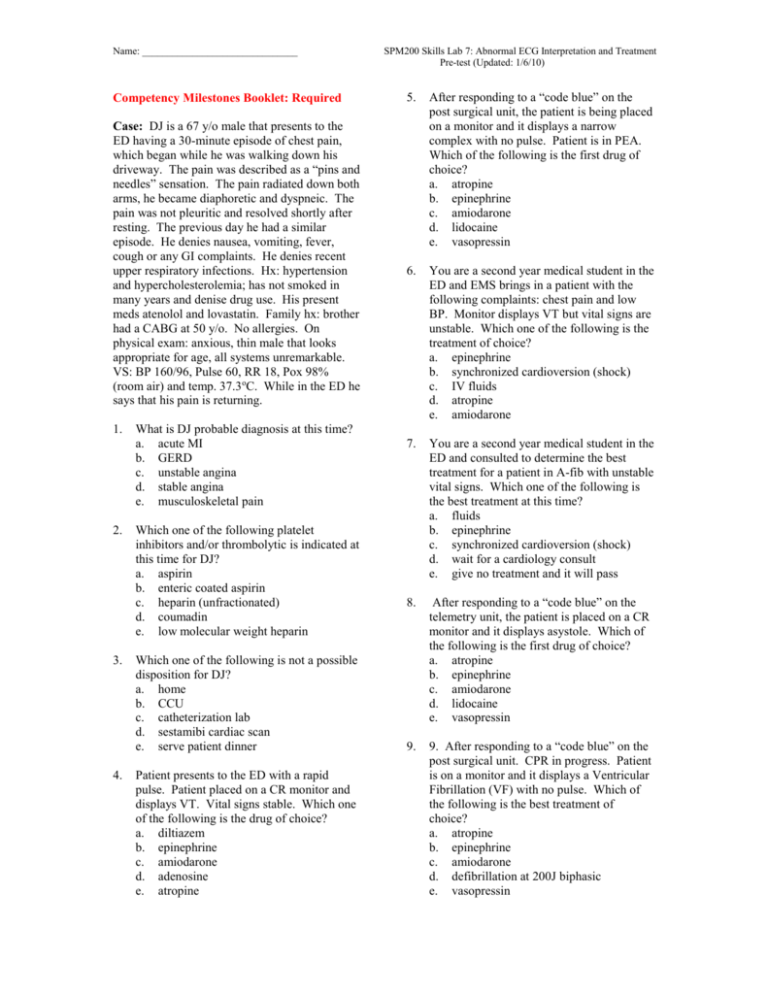
Name: _______________________________ Competency Milestones Booklet: Required Case: DJ is a 67 y/o male that presents to the ED having a 30-minute episode of chest pain, which began while he was walking down his driveway. The pain was described as a “pins and needles” sensation. The pain radiated down both arms, he became diaphoretic and dyspneic. The pain was not pleuritic and resolved shortly after resting. The previous day he had a similar episode. He denies nausea, vomiting, fever, cough or any GI complaints. He denies recent upper respiratory infections. Hx: hypertension and hypercholesterolemia; has not smoked in many years and denise drug use. His present meds atenolol and lovastatin. Family hx: brother had a CABG at 50 y/o. No allergies. On physical exam: anxious, thin male that looks appropriate for age, all systems unremarkable. VS: BP 160/96, Pulse 60, RR 18, Pox 98% (room air) and temp. 37.3oC. While in the ED he says that his pain is returning. 1. 2. 3. 4. What is DJ probable diagnosis at this time? a. acute MI b. GERD c. unstable angina d. stable angina e. musculoskeletal pain Which one of the following platelet inhibitors and/or thrombolytic is indicated at this time for DJ? a. aspirin b. enteric coated aspirin c. heparin (unfractionated) d. coumadin e. low molecular weight heparin Which one of the following is not a possible disposition for DJ? a. home b. CCU c. catheterization lab d. sestamibi cardiac scan e. serve patient dinner Patient presents to the ED with a rapid pulse. Patient placed on a CR monitor and displays VT. Vital signs stable. Which one of the following is the drug of choice? a. diltiazem b. epinephrine c. amiodarone d. adenosine e. atropine SPM200 Skills Lab 7: Abnormal ECG Interpretation and Treatment Pre-test (Updated: 1/6/10) 5. After responding to a “code blue” on the post surgical unit, the patient is being placed on a monitor and it displays a narrow complex with no pulse. Patient is in PEA. Which of the following is the first drug of choice? a. atropine b. epinephrine c. amiodarone d. lidocaine e. vasopressin 6. You are a second year medical student in the ED and EMS brings in a patient with the following complaints: chest pain and low BP. Monitor displays VT but vital signs are unstable. Which one of the following is the treatment of choice? a. epinephrine b. synchronized cardioversion (shock) c. IV fluids d. atropine e. amiodarone 7. You are a second year medical student in the ED and consulted to determine the best treatment for a patient in A-fib with unstable vital signs. Which one of the following is the best treatment at this time? a. fluids b. epinephrine c. synchronized cardioversion (shock) d. wait for a cardiology consult e. give no treatment and it will pass 8. After responding to a “code blue” on the telemetry unit, the patient is placed on a CR monitor and it displays asystole. Which of the following is the first drug of choice? a. atropine b. epinephrine c. amiodarone d. lidocaine e. vasopressin 9. 9. After responding to a “code blue” on the post surgical unit. CPR in progress. Patient is on a monitor and it displays a Ventricular Fibrillation (VF) with no pulse. Which of the following is the best treatment of choice? a. atropine b. epinephrine c. amiodarone d. defibrillation at 200J biphasic e. vasopressin Name: _______________________________ SPM200 Skills Lab 7: Abnormal ECG Interpretation and Treatment Pre-test (Updated: 1/6/10)
